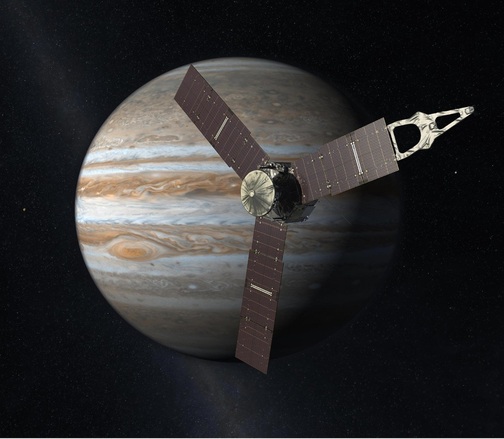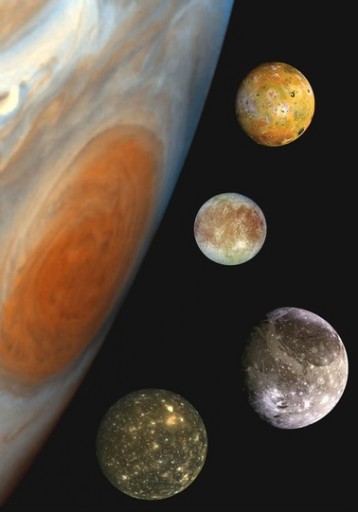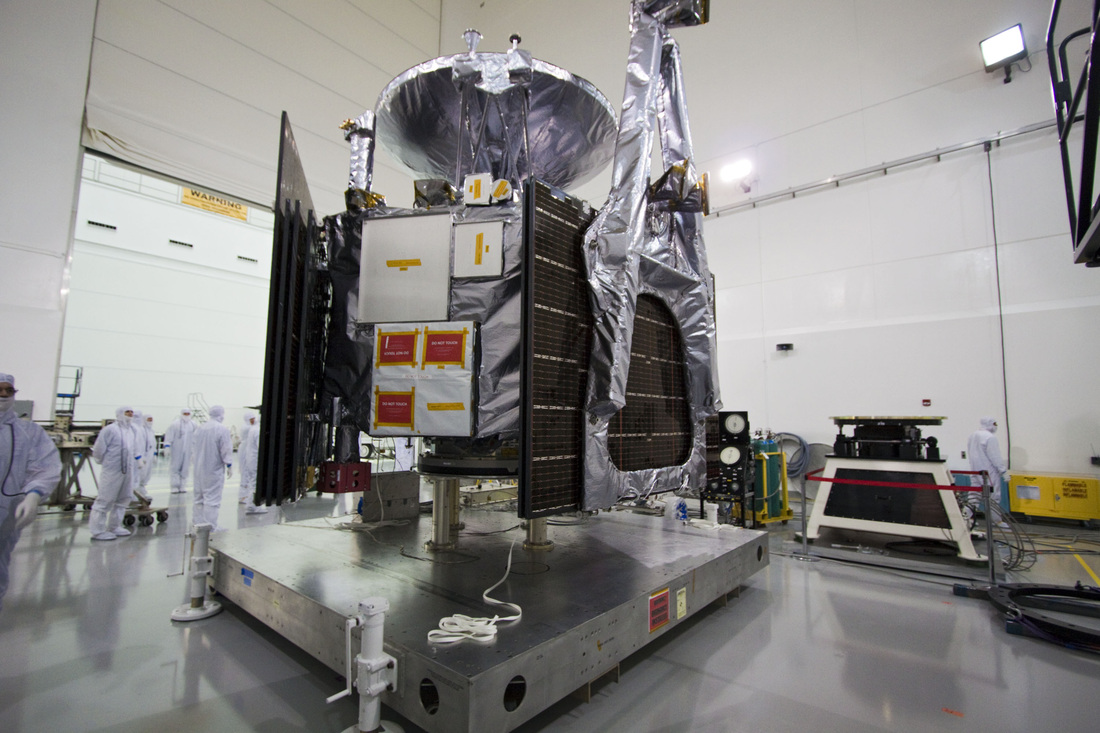
Juno - NASA's second New Frontiers Mission - sets out to complete a five-year odyssey to Planet Jupiter to complete a one-and-a-half-year campaign of observation.
Launched atop the most-powerful Atlas V Rocket on the market, Juno began its long journey in August 2011. Its path took the spacecraft once around the sun, completing a pair of major maneuvers to set up its inbound leg for a speedy gravity-assist flyby of Earth in October 2013. Making its way out to the fifth planet in the Solar System, Juno inserts itself into orbit around Jupiter on July 4th, 2016.
Juno then spirals down into a 14-day orbit, getting closer to the gas giant than any spacecraft before to peer deep beneath the planet's dense cloud tops when passing within 5,000 Kilometers.
Juno is only the second spacecraft to enter orbit around Jupiter, following in the footsteps of NASA's Galileo mission launched in 1989 and active in orbit around Jupiter from 1995 to 2003. After Galileo showed that Jupiter's atmosphere was very different than initially believed, a strong desire grew to dispatch a spacecraft with modern instruments to study the planet.

The Juno mission sets out to study Jupiter's atmosphere down to unprecedented altitudes were pressures reach the extreme, obtaining a detailed record of the atmosphere's composition and profiles of pressure, temperature and cloud cover. Peering even deeper, Juno will study the planet's gravity to determine whether a solid core is present.
A magnetospheric study will be conducted by Juno's instruments and the spacecraft will characterize the inflow of charged particles, generating the most powerful auroral displays in the Solar System. JunoCam, an educational payload on Juno, will deliver color imagery of the planet, including views of the unexplored poles - shedding light on previously uncharted territory within the solar system.
Juno will reveal many secrets Jupiter holds to date, revealing hot the planet formed which will provide information on the early stages of the solar system because, to this date, Jupiter has maintained a state similar to its formation.
The Juno spacecraft will be tormented by some of the strongest radiation found in the solar system since Jupiter's radiation belts are orders of magnitude stronger than Earth's Van Allen Belts. Radiation exposure represents the constraining factor for the mission and Juno will be limited to 33 science orbits around the planet before meeting its end in a controlled, destructive re-entry in February 2018.

